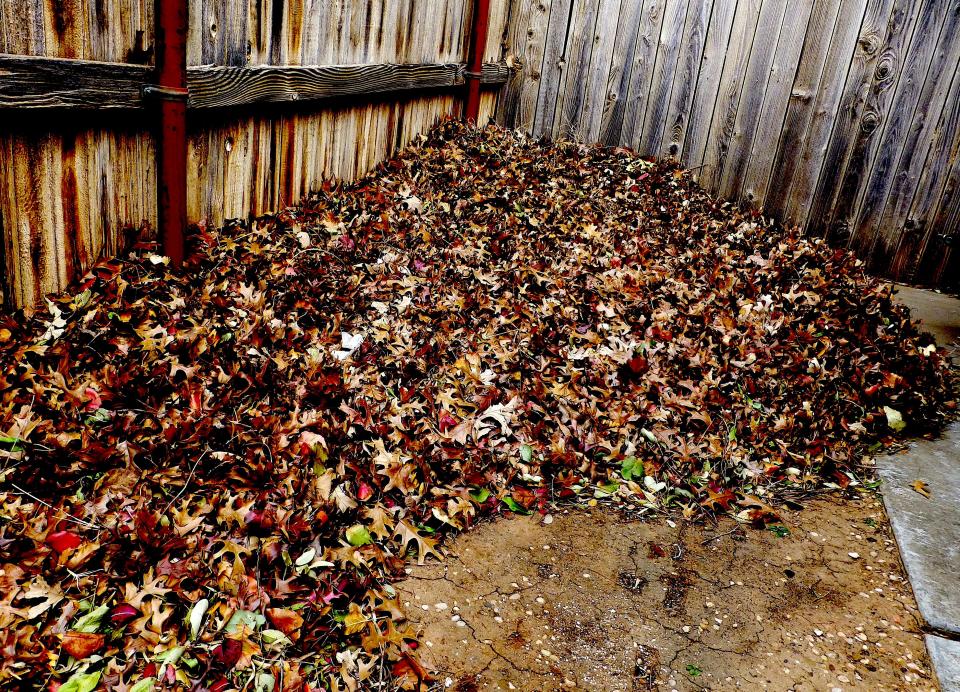Gardening for You: Leaf mold is brown gold
Leaf mold! Ick. Just the sound of "leaf mold" makes germaphobes grimace. But when the process of making it is done right, leaf mold can be gold in the garden.

Another term for leaf mold would be composted leaves. All that’s needed for the gardener to turn fallen autumn leaves into a rich source of organic matter is a small, unobtrusive space for storage. And at this time of year there is a seemingly inexhaustible supply of leaves.
Before we get too far into the discussion of what leaf mold is and how to generate it, the distinction between leaf mold and ordinary compost needs to be clarified. Leaf mold is composed entirely of leaves, while traditional compost is a composition of kitchen waste, grass clippings, maybe leaves, amended with soil and nutrients from fertilizer. Traditional compost is effective only when temperatures in excess of 130 degrees F have been reached. High temperatures are needed to sterilize the composted organic matter.
The process of making leaf mold is simple but it does take time. Leaves are gathered and stored in containers. It is important to have clean leaves, without weed or grass seed. In our garden bags that once held 40 pounds of dog food or bird seed are the containers of choice as they are free and hold just the right amount of leaves.
Next, moisten the leaf pile in the bag. Don’t drench, add just enough water to filter down through the leaf profile without pooling in the bottom of the bag. And that’s it.
It is the natural, beneficial fungi present on the leaf matter that start the composting or molding process, hence the descriptive name leaf mold. There are huge numbers of fungus present on all leaves. The carbon of the leaf matter becomes the nutrient source for fungi to increase and thrive. As fungi multiply, they consume the leaves and degradation speeds up. To hasten decomposition of the leaves, they can be shredded into smaller pieces at the start of the process.
Keep bags closed to exclude light and hold in moisture, providing the environment that is favorable for optimal fungal growth. The leaf mold is ready for the garden after leaves have sufficiently decomposed into organic matter that no longer resembles the beginning leaves. Leaf matter will be crumbly, dark, and earthy, slightly sweet smelling.
Leaf mold is a naturally occurring process such as found in wooded areas. A forest is a biological capsule of a leaf mold laboratory where leaves fall, lay on the ground and over time decompose, enriching the soil underneath.
Leaf mold ready to be harvested is a rich source of organic matter when incorporated into the soil. As a soil amendment leaf mold increases the water holding capacity and makes soil more friable and crumbly.
Ellen Peffley taught horticulture at the college level for 28 years, 25 of those at Texas Tech, during which time she developed two onion varieties. She is now the sole proprietor of From the Garden, a market garden farmette. You can email her at gardens@suddenlink.net
This article originally appeared on Lubbock Avalanche-Journal: Gardening for You: Leaf mold is brown gold

